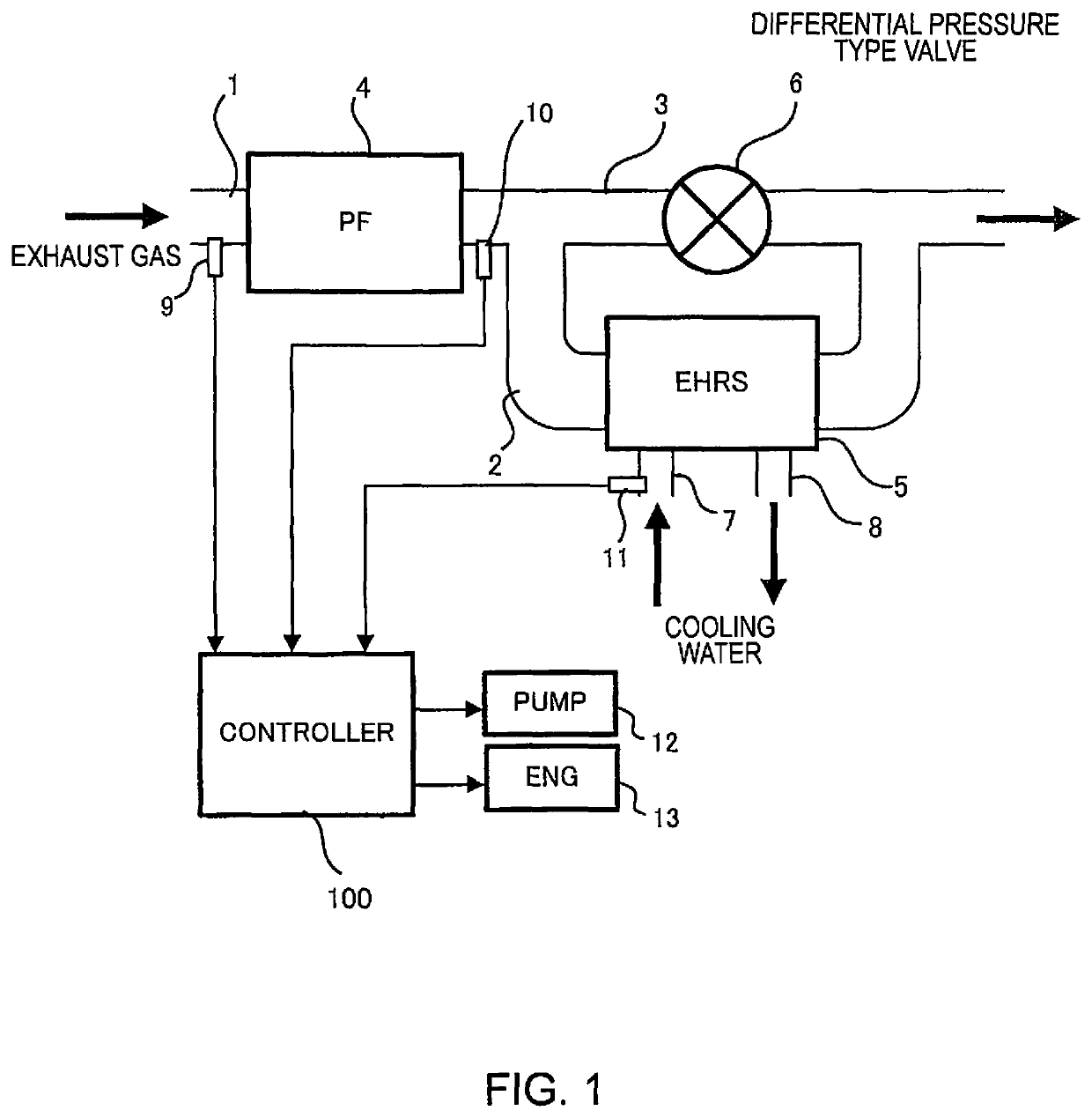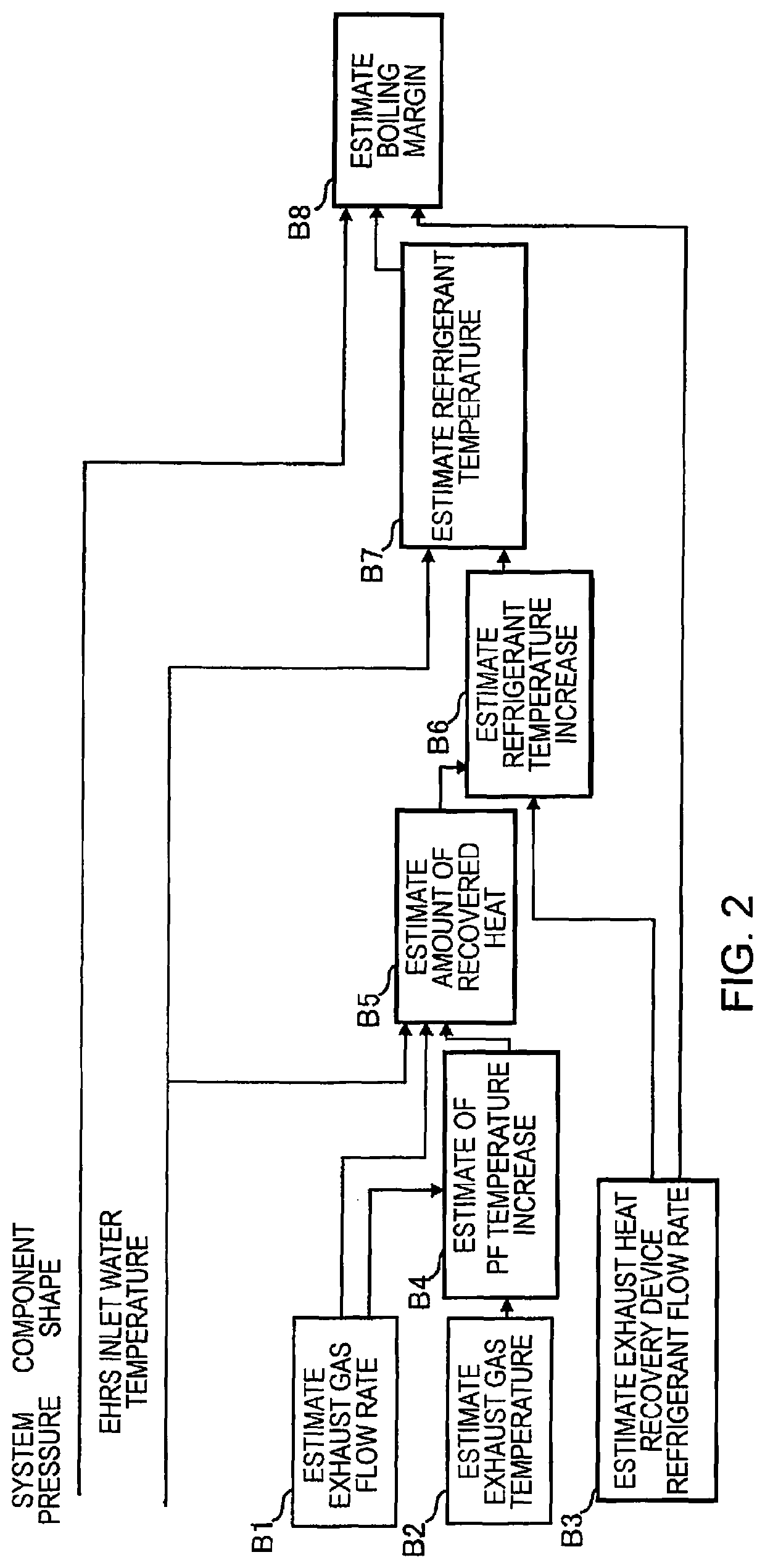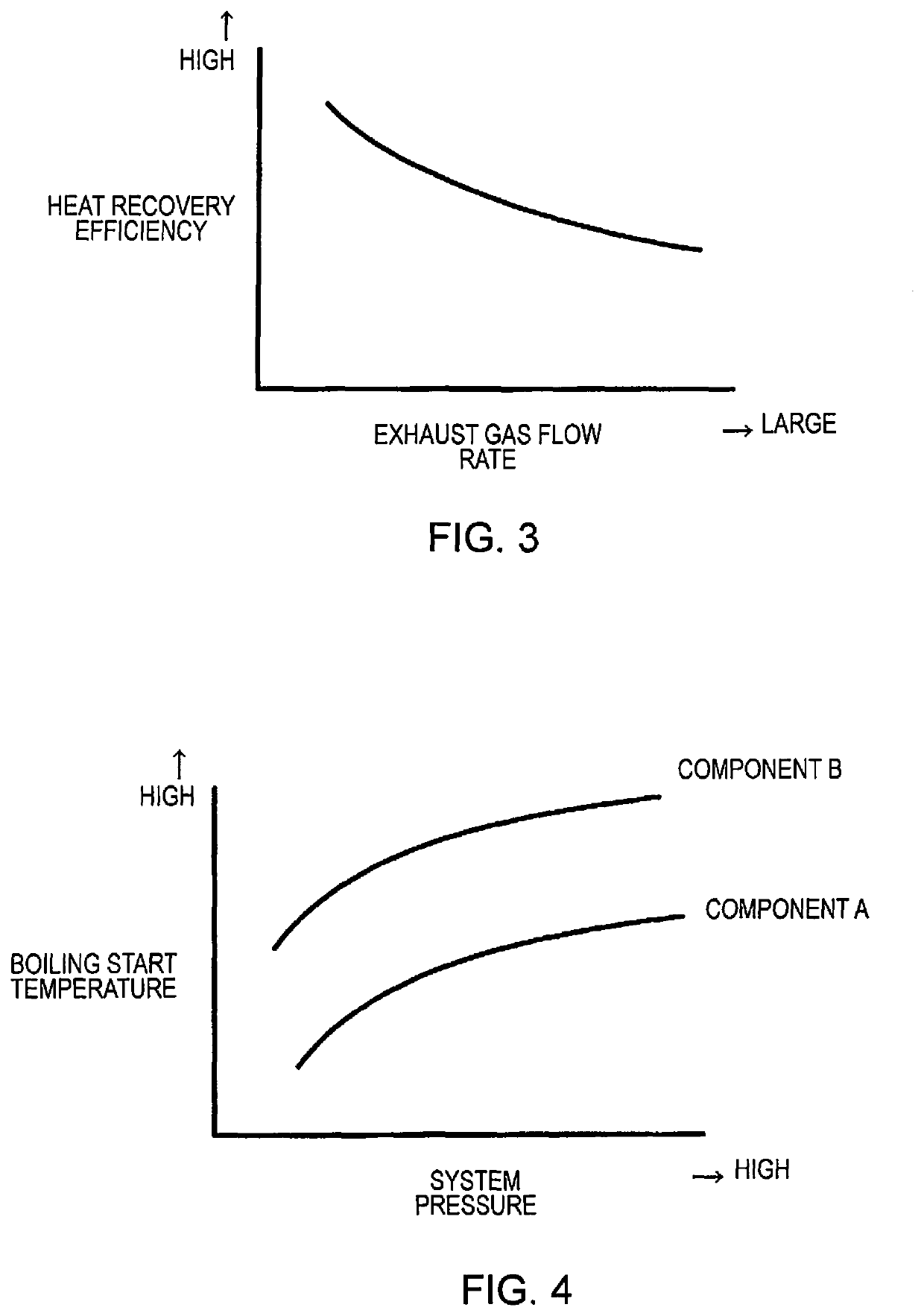Internal combustion engine control method and internal combustion engine control device
- Summary
- Abstract
- Description
- Claims
- Application Information
AI Technical Summary
Benefits of technology
Problems solved by technology
Method used
Image
Examples
first embodiment
[0019]FIG. 1 is a schematic diagram of a system to which the first embodiment is applied. A filter 4 is disposed in an exhaust passage 1. The exhaust passage 1 branches, downstream of the filter 4, into a main passage 2 provided with an exhaust heat recovery device 5 serving as an exhaust gas temperature variation factor unit, and a bypass passage 3, which bypasses the exhaust heat recovery device 5. A differential pressure type valve 6 is disposed in the bypass passage 3.
[0020]The filter 4 has a function of collecting particulate matter included in exhaust gas. Specifically, it is a GPF when an internal combustion engine 13 is a gasoline engine, and a DPF in the case of a diesel engine.
[0021]A first pressure sensor 9 is disposed on the upstream side of the filter 4 of the exhaust passage 1, and a second pressure sensor 10 is disposed on the downstream side thereof. Detected values of the first pressure sensor 9 and the second pressure sensor 10 are read by a controller 100 serving ...
second embodiment
[0064]The second embodiment will be described. The difference from the first embodiment lies in the content of the boiling avoidance process. In the first embodiment, the prohibition of forced regeneration acts as the boiling avoidance process, but in the second embodiment, in addition to the prohibition of forced regeneration, an increased refrigerant flow rate is also used. Hereinafter, differences from the first embodiment will be mainly described.
[0065]FIG. 6 is a flowchart illustrating a control routine executed by the controller 100. Since Steps S200-S213 are the same as Steps S100-S113 of FIG. 5, their description will be omitted.
[0066]In Step S214, the controller 100 increases the refrigerant flow rate and ends the current routine. The amount of increase is set in advance on the basis of suitability, or the like. When the refrigerant flow rate is increased, the refrigerant temperature at the outlet of the exhaust heat recovery device 5 decreases even if the amount of recover...
third embodiment
[0069]The third embodiment will now be described. In the control described in the first and second embodiments, it is determined whether the refrigerant would boil before carrying out forced regeneration, and the forced regeneration is prohibited if there is a risk of boiling. In contrast, the control of the present embodiment is carried out if regeneration were to start at an unintended timing. A case in which regeneration starts at an unintended timing is, for example, a case in which the filter 4 is a GPF, and the engine rotation speed increases as a result of the driver depressing the accelerator pedal to accelerate, thereby starting regeneration.
[0070]FIG. 7 is a flowchart illustrating a control routine executed by the controller 100.
[0071]In Step S300, the controller 100 determines whether the difference between the refrigerant temperature at the inlet and the refrigerant temperature at the outlet of the exhaust heat recovery device 5 (hereinafter also referred to as refrigera...
PUM
 Login to View More
Login to View More Abstract
Description
Claims
Application Information
 Login to View More
Login to View More - R&D
- Intellectual Property
- Life Sciences
- Materials
- Tech Scout
- Unparalleled Data Quality
- Higher Quality Content
- 60% Fewer Hallucinations
Browse by: Latest US Patents, China's latest patents, Technical Efficacy Thesaurus, Application Domain, Technology Topic, Popular Technical Reports.
© 2025 PatSnap. All rights reserved.Legal|Privacy policy|Modern Slavery Act Transparency Statement|Sitemap|About US| Contact US: help@patsnap.com



